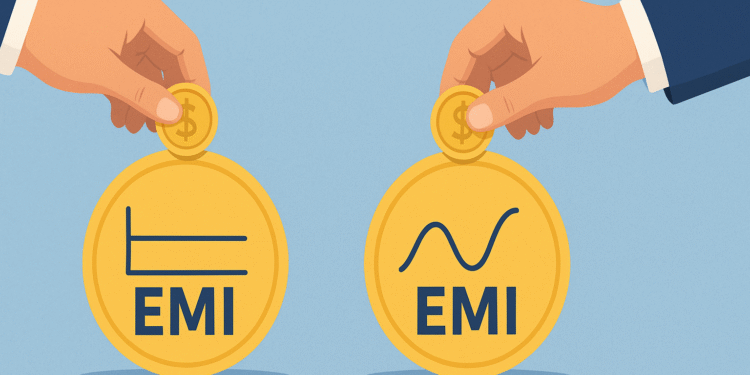When exploring loans, one of the first decisions you’ll face is whether to choose a fixed or flexible EMI plan. This choice isn’t just about numbers—it directly affects how comfortably you manage repayments over the years. With interest rates experiencing steady fluctuations, understanding how each option works can help you stay financially prepared. Read on to know more.
Basic Understanding
Before comparing the two EMI types in depth, it’s important to first understand what fixed and floating interest rates mean and how they shape your loan structure.
Fixed Interest Rate: Predictable and Consistent
A fixed interest rate remains unchanged for the entire loan tenure. For example, if you secure a personal loan at 8% interest, you will continue to pay EMIs at that personal loan rate of interest until the loan is fully repaid. This means your EMI remains steady regardless of any shifts in the broader economic landscape.
Floating Interest Rate: Market-Linked and Variable
On the other hand, a floating interest rate is tied to market conditions. It fluctuates depending on factors such as inflation and policy decisions by the Reserve Bank of India (RBI). This means your EMI may increase or decrease over time, offering potential savings but also carrying the risk of higher payments.
Fixed vs Flexible EMIs in Today’s Scenario
Once you understand how both models function, the next step is to evaluate which one fits your lifestyle, income pattern, and financial preferences.
Prioritising Stability
If consistency brings peace of mind, a fixed EMI plan can be the preferred option. With no changes in monthly outgo, it becomes easier to plan expenses, save systematically, and meet long-term goals without interruption. This is often suitable for salaried individuals or those with a fixed income.
Valuing Flexibility
On the other hand, if you’re comfortable managing changes and believe your income may rise over time, a flexible plan offers adaptability. It allows you to take advantage of any potential shifts that could reduce your EMI, giving you an opportunity to repay more efficiently when conditions are favourable.
Advantages of Fixed EMI Plans
Choosing fixed EMIs can be beneficial for those who value control and consistency in financial planning.
Simplified Budgeting
Since the EMI doesn’t change, your monthly cash flow remains predictable. This makes it easier to maintain discipline across savings, investments, and lifestyle expenses.
No Unpleasant Surprises
With a fixed repayment amount, you’re not exposed to market shifts. This insulates your financial plan from unexpected jumps in monthly obligations and helps you avoid last-minute adjustments.
Advantages of Flexible EMI Plans
Despite the uncertainties, flexible EMI plans offer their own set of benefits for certain types of borrowers.
Potential for Savings
When conditions are favourable, flexible EMIs can lead to lower payments, reducing the overall cost of borrowing. This dynamic structure can reward borrowers who are comfortable with change.
Room to Accelerate Repayment
Some flexible EMI plans allow for faster repayment when you have surplus income, helping you close the loan earlier than expected without penalties in some cases.
If you’re considering a personal loan, estimating your monthly EMI is a helpful way to plan ahead. A personal loan EMI calculator is a simple tool that gives you a clear view of how much you’ll pay every month based on your loan amount, tenure, and interest rate.
Conclusion
Choosing between fixed and flexible EMI plans depends on your current financial comfort, risk tolerance, and expectations of how interest rates will evolve. Fixed EMIs offer stability and predictability, making them appealing in times of economic uncertainty. Flexible EMIs, on the other hand, offer room for potential savings but come with more unpredictability. By understanding how both options function and how they respond to market changes, you can make a more informed decision that aligns with your financial goals.













